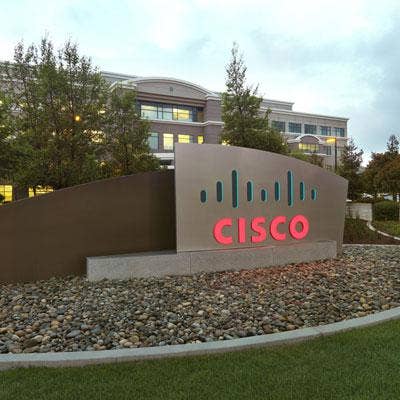VeloCloud CEO: SD-WAN Is Making 'The Cloud The New Network'
The Evolution Of Connectivity
Cloud-delivered WAN specialist VeloCloud said it's only a matter of time before the cloud becomes the network. The Mountain View, Calif.-based networking startup said it's reinventing wide area networking through software-defined initiatives that will ultimately reshape the network.
Software-defined WAN is an emerging technology that provides network simplification, cost savings and increased agility, according to a recent Gartner report. Gartner said by the end of 2018, 10 percent of enterprises will have replaced their WAN routing with SD-WAN solutions, up from less than 1 percent in 2015.
VeloCloud CEO Sanjay Uppal tells CRN how VARs are transitioning to become MSPs, the revenue opportunity for SD-WAN in the emerging Internet-of-Things market and why the cloud will be considered the new network.

Why do customers want SD-WAN, and what are the benefits of having your network in the cloud?
When you're talking benefits, there's virtualization, stability, security -- all of that accrues when the cloud becomes the network. The way we believe we're going to hit the ball out of the park -- which we're already seeing -- is customers who really want the flexibility of different WANs, who want the ability to turn up and down services on-the-fly rather than be bound together in hardware, and who want to do that at fairly low levels of their own OpEx. They can do all this when the cloud becomes the network.

Explain VeloCloud's mantra of 'The Cloud Is The Network?'
The WAN network has not moved to the cloud just yet, but there's no doubt it's going there. The software-defined portion of it is the way that we'll get it done because it's very difficult to make the cloud become the network without doing it in software rather than rolling out tons of hardware.
Previously, you had to roll out hardware-based products then put them in different locations like data centers and branch offices. Now you don't need to do that because you move all of that compute into the cloud in order to move the networking in the cloud, so now you're running these as network services and they are virtual services -- there's just too many benefits.

How are channel partners evolving as everything moves to the cloud?
The main change we're seeing is VARs becoming MSPs. Then the MSPs are adding more services as they go along, so vendors like us enable the channel to become managed services providers. That's very exciting for the channel and it's very exciting for us, and it's what the enterprise wants in any case.

Will the shift drive channel revenue?
Yes. If you were simply a channel partner that was selling hardware, now you can provide the endpoint hardware or virtual software so you can see what your customer's network looks like. You can actually see all the branches being run, see what applications are running, then MSPs can go to the customer and say, 'Hey look, I think you're oversubscribed in this branch' or, 'Your applications are not running right in these other branches.' So these are a set of services that partners can suggest to customers now.
VeloCloud's platform for SD-WAN, for example, is enabling this entire new class of channel folks who are already MSPs that want to sell more services, or partners who are in hardware who want to get into the services business.

Does SD-WAN fit into the emerging Internet-of-Things?
If you look at the Internet of Things, the things are only as good as the network they connect to, and the network is going to become the SD-WAN.
An individual residence can have 5,000 sensors, a factory floor can have 50,000 sensors measuring everything possible. But none of this is going to be helpful if you cannot collect all of this information, make use of it, and then look at the analytics and take some action based on it. That's where the WAN comes in, because the WAN allows you to collect all the analytics in some central location and then provide the platform so that other IoT software can go in and make sense of the data. Then the action taken comes over an SD-WAN type of network.

Are your customers talking about SD-WAN enabling IoT?
We already have customers that are looking at combining IoT with an SD-WAN type of infrastructure as the platform to roll it out. There's no doubt in my mind that it's going to happen; it's already begun to happen because the WAN is an integral part of IoT.

How will VeloCloud compete with Cisco in this emerging SD-WAN space?
Cisco is the incumbent in the space. However, we do not believe that just building a better Cisco router is the way to go. We were actually the only independent SD-WAN company that was invited to partner with Cisco at their Cisco Live event this year.
We were showing our Virtual Edge solution running on the Cisco integrated services router, and we believe that is how things are going to play out. This is not a VeloCloud versus Cisco situation -- this is a 'How can we better create the new reality of cloud becoming the network' situation.

What makes VeloCloud a differentiator in the market against competitors like CloudGenix and Silver Peak?
Having CloudGenix, Viptela, Silver Peak, Talari Networks in the mix is a positive thing, because when there's different minds at play looking at the same set of problems that people have, it helps from a market perspective.
One of the things that clearly distinguishes us is we're providing SD-WAN-as-a-Service. We can provide that on a monthly basis, a SaaS-based model, a model where cloud becomes the network. With our cloud-centric position, there is no competitor out there that is as heavy or has an all-in position in terms of cloud becoming the network as VeloCloud does. For us, the cloud is the network, the network is the cloud -- it's synonymous and we've been doing that since Day 1.

How is VeloCloud's channel strategy driving growth?
We have two aspects to our channel. We can sign an MSP then sell them the product gear at a discount ranging anywhere between 20 to 30 percent. They take that gear and potentially run it as their own service by deploying the gear at their point of preference -- this if for really large service providers.
We also allow both VARs and MSPs to resell our value-added service, our SD-WAN service, and provide them with different levels of discounts, dedicated resources, training, deal registration and market development funding. Both aspects are running successfully.